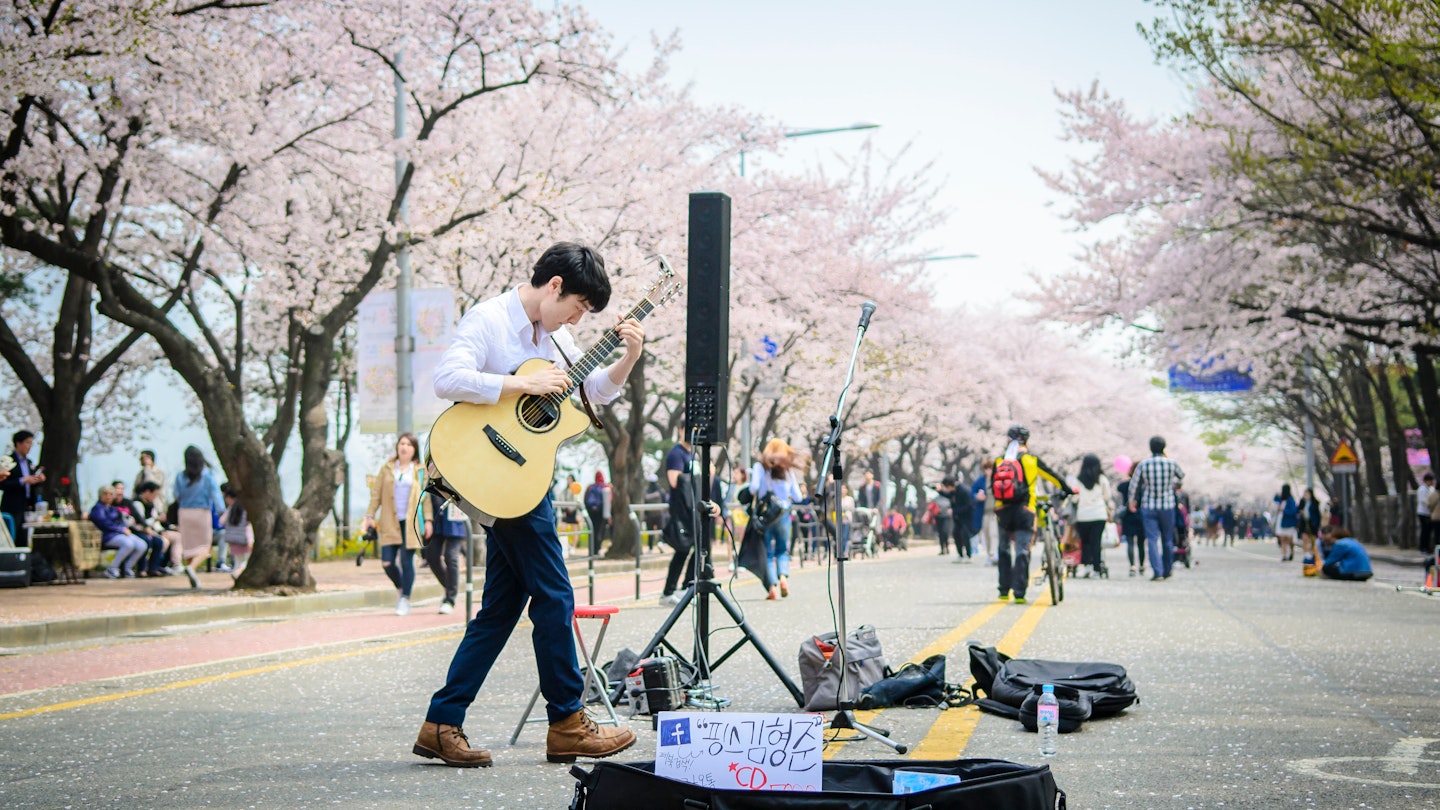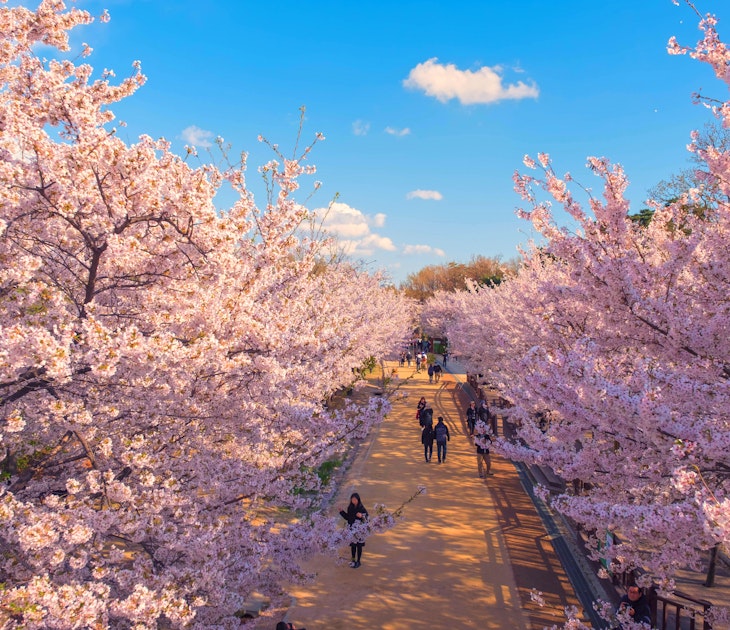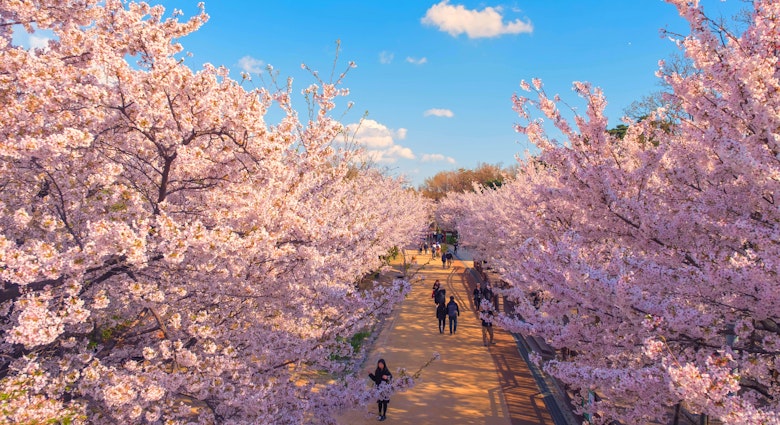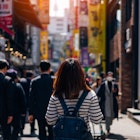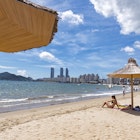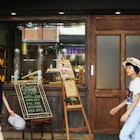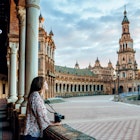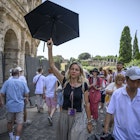Seoul is often ranked as having one of the best public transportation systems in the world, and with clean and punctual trains and buses and signs in several languages at most subway and bus stops, it’s not hard to see why.
Getting around the capital of South Korea is now smoother than ever thanks to several smartphone apps that provide real-time information. For example, KakaoMap is available in English and can map out any journey from door to door, covering everything from when the next bus will come to the specific train car to board to quickly connect to your next transfer. Seoul’s subway trains and buses have free Wi-Fi, so you can keep track of your journey online, even without a SIM card.
From buses and bicycles to taxis and more, here’s the insider scoop on the best ways to get around Seoul.
Discover 30+ top Seoul attractions all on one pass with Go City. Pick between a 1 to 5- day All-Inclusive Pass and brave the thrill rides at Lotte World, visit the border on a Demilitarized Zone Tour, enjoy the views from N Seoul Tower, and much more!
Seoul's T-money public transport pass brings convenience and savings
Seoul’s buses and trains are operated by several different companies, but you can pay for journeys with all operators using the transit pass known as the T-money card. Visitors to Seoul can purchase T-money cards at convenience stores across the city for ₩2500 and then charge them with credit in increments of ₩1000, ₩5000 or ₩10,000.
It is possible to buy a single-ride ticket at the station each time or pay in cash on the bus, but T-money cards can be used in taxis, subways and buses across the country, and they can be purchased in conjunction with other special deals for foreign tourists.
Because many of the cards have a special design or theme (such as pictures of K-pop group BTS), many people choose to keep the card as a souvenir, but they can be refunded for the original price at Incheon International Airport when you leave the country.

The Metro is the fastest and most affordable way to get around Seoul
With 22 subway lines making 302 stops across the city, the Seoul Metro is a highly efficient way to get around the city. Download the Seoul Metro Subway app for iPhone or Android, and you’ll find the entire process quite straightforward. Each station has English-language signs, and stops are announced in Korean, English, Chinese and Japanese.
Subway fares start at ₩1350 per ride and rates go up after the first 6.2 miles – which rarely happens because the radius of Seoul is only nine miles. You are allowed up to four transfers to another subway line or a bus for free within 30 minutes.
On the platform, live information screens tell you when the next train is coming. Interruptions to service are rare, and delays (which seldom take longer than a few minutes) are clearly marked on the screen or announced on board. Exits are numbered and the signage under each exit also tells you major landmarks in the general direction of that exit.
Etiquette is important on the subway. Most people line up outside the train doors and enter in an orderly manner. Train cars usually have reserved seats for the elderly, pregnant passengers and travelers with disabilities. Visitors sometimes use these seats when they are available, but it’s considered good manners to leave these seats empty to avoid inconveniencing people who need to use them.
Major hubs where several subway and train lines intersect, such as Seoul Station, Sindorim Station and Cheongnyangni Station, can be overwhelming, even for locals. If you’re changing between one subway line and another, you generally don’t tap out to make transfers.
If you get lost, you can find a station manager to help; they may not always speak English, but you can simply show them the stop you want to reach and they'll point you in the right direction. The subway generally stops running from midnight to 5:30am, but times vary by line. Check the Seoul Metro app for exact timings for your journey.
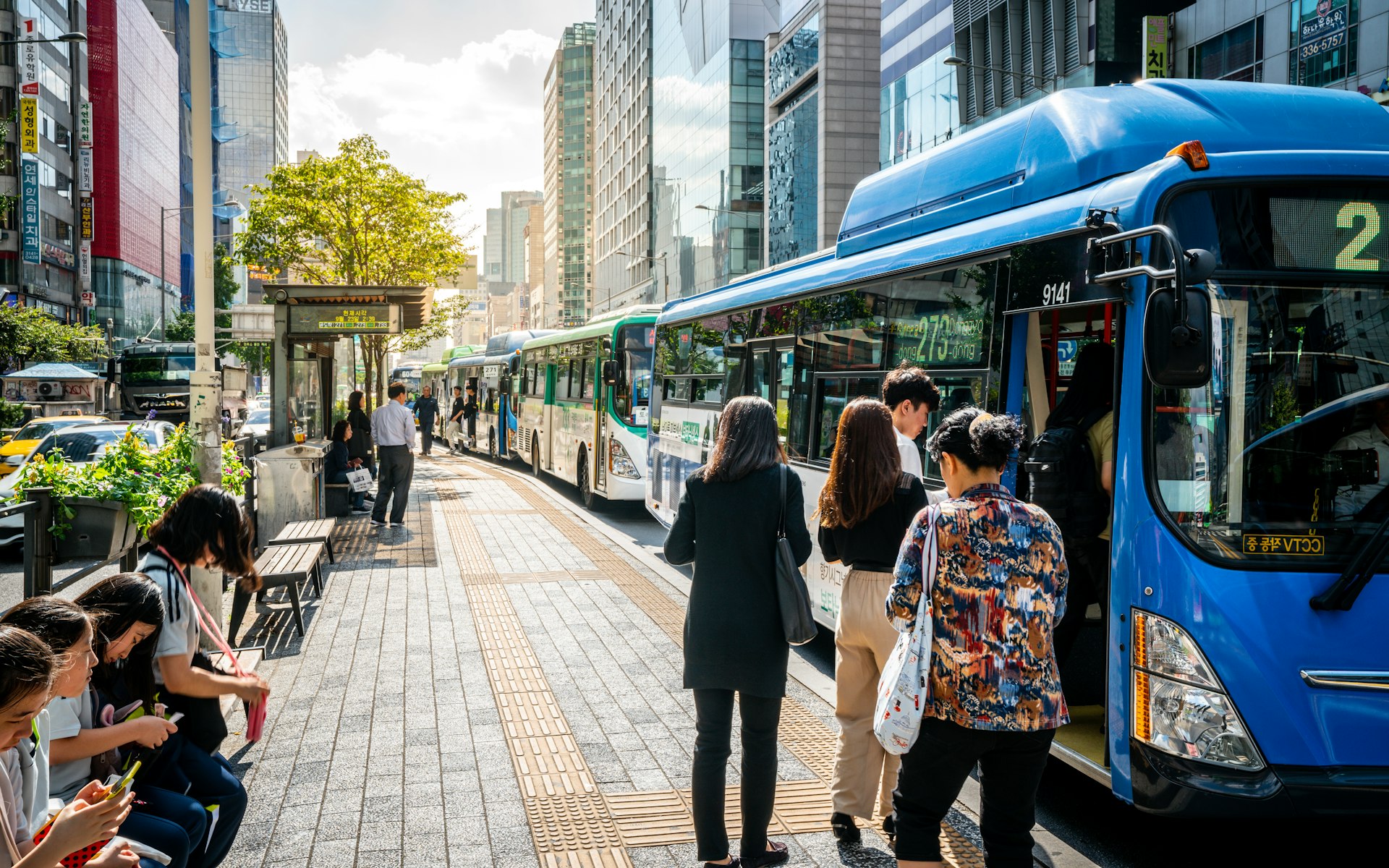
Seoul’s buses can take you anywhere in the city
Visitors to Seoul often say that taking the bus feels more daunting than taking the subway because the smaller vehicles make it a much more intimate experience and it’s more difficult to find your way back if you’ve lost your way. However, buses can be an efficient mode of transportation, especially if you’re traveling to a more residential area or if your subway route requires more than one transfer.
Bus stops generally indicate bus routes in both Korean and English and have a digital screen that shows when the next bus arrives, as well as indicating of how crowded the bus is. The seat availability signage is only in Korean, but the “comfortable” sign is usually white, the “average” sign is yellow, and the “busy” sign is red. Bus stop signs also give weather and air quality information, and some bus stops even have seats that warm up in colder weather.
Seoul has five types of buses that are color-coded to indicate their purpose. Green and blue buses are the main types of bus covering cross-town routes, and tickets cost about ₩1300. The small green local buses known as maeul are about half the size of the regular green buses, and they typically travel in only one neighborhood or district. Maeul bus fares are ₩1200.
Red buses travel between Seoul and outer regions and cost ₩2400. The city also has a handful of yellow buses, or circulator buses, that loop around popular tourist destinations such as Namsan and Myeongdong. These buses cost ₩700.
You can pay in cash when boarding the bus, but T-Money card users receive a ₩100 discount on the standard fare. You are allowed up to four transfers either to the subway or another bus for free within 30 minutes. Typically, you tap in at the front door when you enter the bus and tap out in the back door when you exit. Remember to tap out to secure your free transfers and discount.
There is only a loose system of lining up to enter the bus. During rush hour, passengers often enter through the back door or exit through the front door. However, some bus drivers frown upon this practice.
Unlike the subway, some buses operate throughout the night. These night buses are indicated by an N before the number and typically come once an hour. The etiquette of avoiding seats for the elderly, pregnant and travelers with disabilities does not apply like it does on the subway, but you'll be expected to give up your seat if someone needs it.
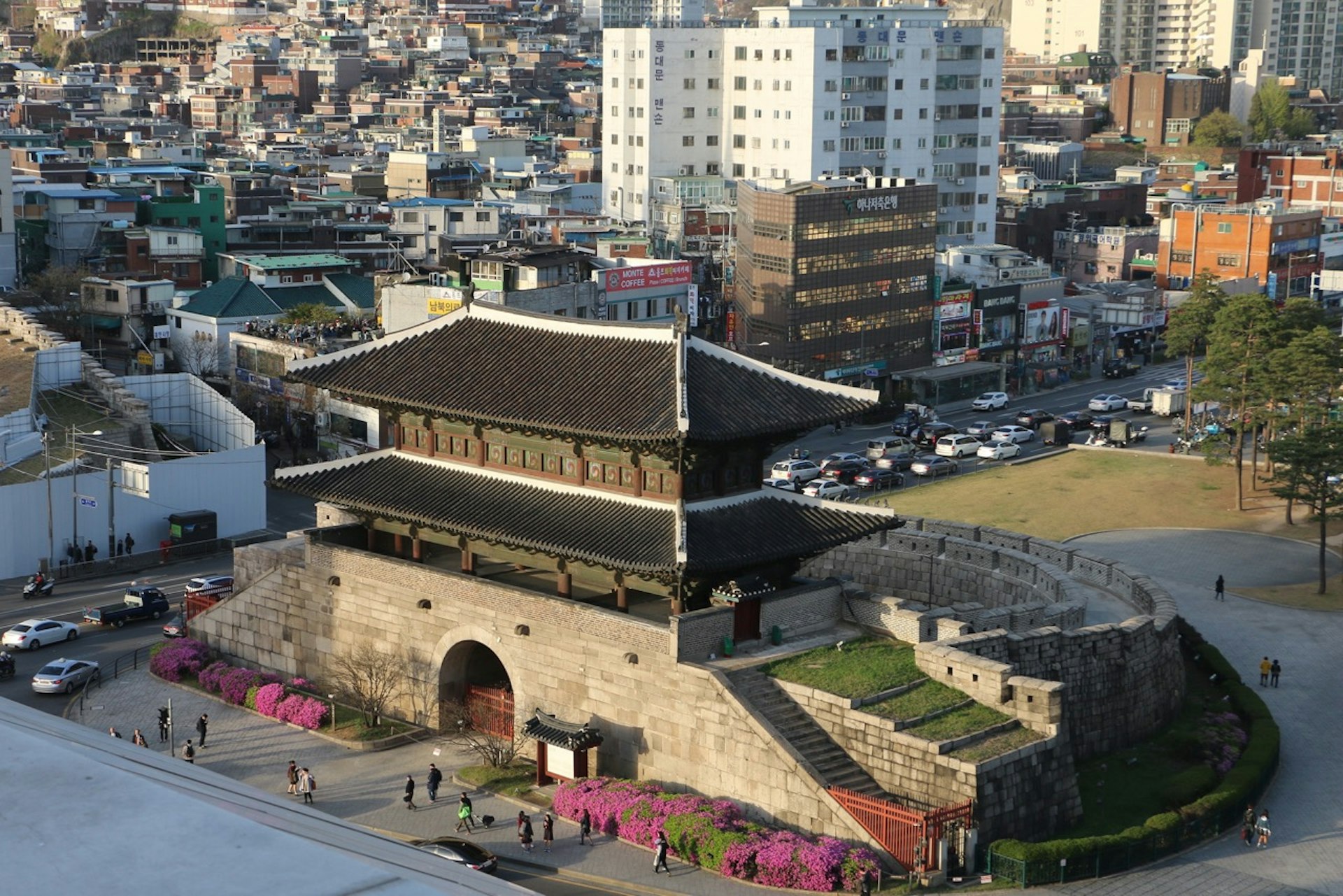
For easy transport at any time of day or night, use Seoul’s taxis
Seoul cabs come in many different shapes and sizes; the most common are mid-size sedans in orange or silver that take a maximum of four passengers. Cabs charge a base fare of ₩3300, plus increments of ₩100 for every eighth of a mile. A nighttime price increase bumps up the base fare to ₩3800 and tacks on a 20% surcharge to the final price between midnight and 4am. You can pay via credit card, cash or T-money card.
Ride-hailing apps like Uber and Lyft do not work in South Korea; Korean ride-hailing apps do exist, but you might need a valid Korean phone number to use them. If you have a local number, download Kakao T, a popular app that’s available in English. Cabs operated by International Taxi Service can be booked on their website or via phone or email, but reservations are required 24 hours in advance. Otherwise, you can hail cabs on the street.
Even if you are confident in your ability to pronounce your destination, it’s best to show a cab driver the name of your destination written in Korean because some places have similar names, such as Sinchon Station and Sincheon Station. If you need to explain your route in detail to your driver, you can call a free interpretation hotline – the number is usually indicated on a sticker on the window side of a cab, but if you don’t see it, try calling BBB, a volunteer service available 24/7, at +82-02-1588-5644.
Be aware that many cab drivers are reluctant to take on short journeys and sometimes reject passengers for this reason. Locals often get in and shut the door before telling the driver which way they’re going to get around this problem.
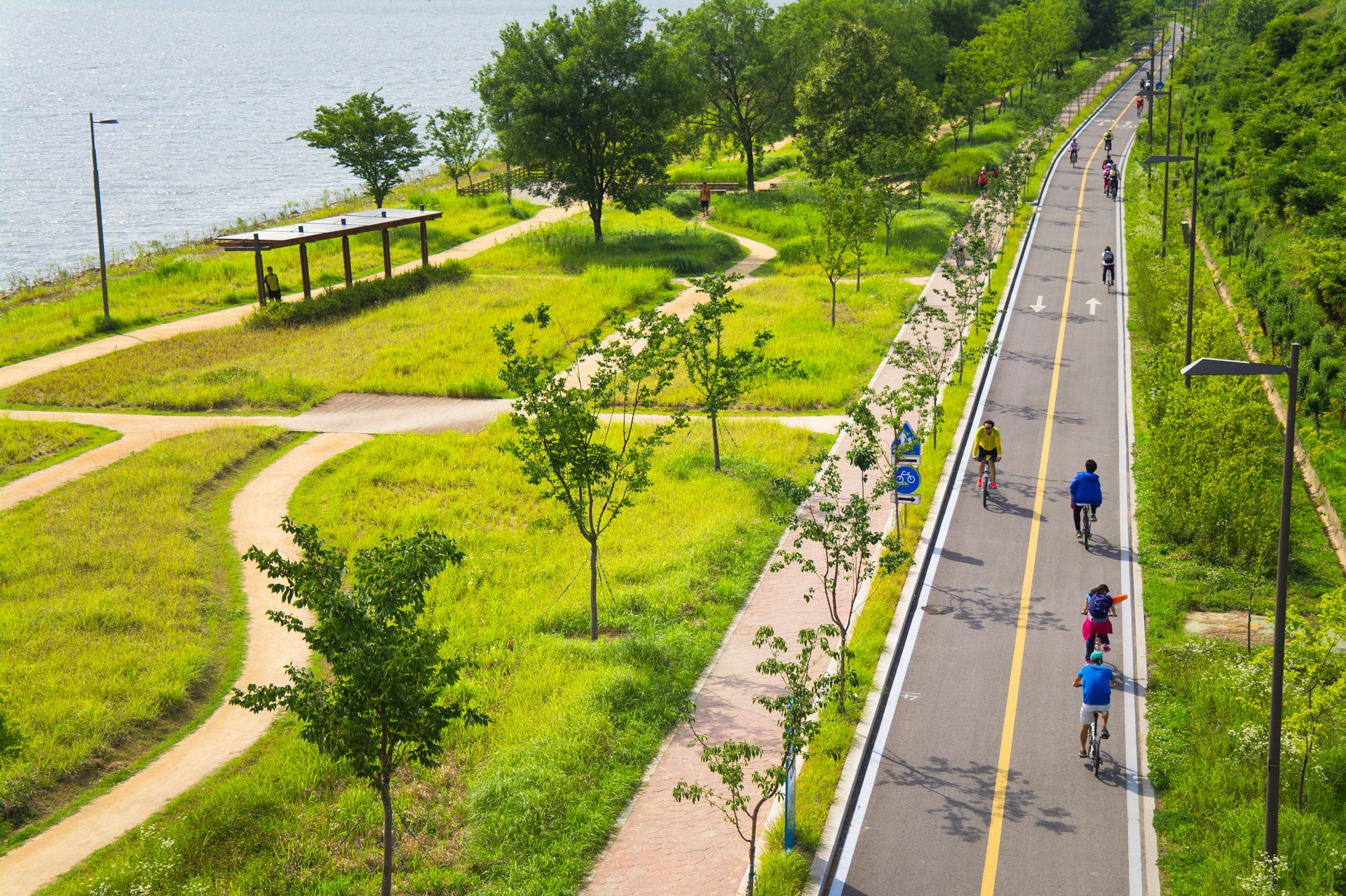
To see Seoul up close, travel by bicycle
Seoul has a handful of bike-share schemes, but the best-known and most accessible to non-Koreans is the Seoul public bike system called Ttareungyi, with its distinctive white and green bicycles. Visitors should create an account online and download the Seoul Bike app to use the system. You can purchase hourly, daily or yearly passes, and bicycles can be rented at one station and returned at another.
There are some useful dedicated cycle paths – including the Hangang River Cycling Trail, which follows the Han River right across the city – but many roads do not have a separate bike path, so cyclists may have to share the sidewalk with pedestrians. Cyclists are also required to dismount and walk across pedestrian crosswalks. Although this is not vigorously enforced, ignoring it may make you liable in the event of an accident.
Driving in Seoul is not recommended
Traffic in Seoul can be gridlocked and parking is cutthroat, even by most city standards. Although you can rent a car with an international driver’s license, it’s not recommended for a short-term visit.
Accessible transportation in Seoul
With audio and visual information systems, elevators, Braille tiles, accessible turnstiles and bathrooms at almost all subway stations across the city, Seoul Metro is considered “mostly accessible" by organizations such as WheelchairTravel.org. If the elevators aren’t working, approach an attendant at the station to help you with a wheelchair lift to the train platform. Priority seating is available for travelers with disabilities, and train cars with wheelchair spaces are marked with a large green wheelchair sign on the floor.
Priority seating is also available on all of Seoul’s buses, almost all of which have a ramp or a floor that can be lowered for those with mobility needs. For more information about accessible sightseeing and calling wheelchair-accessible taxis, check out Seoul Danurim, an accessible travel organization. For more information on accessible travel, see Lonely Planet's free accessible travel resources.

Why walking is my favorite way to travel in Seoul
While every mode of transport in Seoul has its advantages, my favorite way to travel in Seoul – and not just get from point A to point B – is on foot. This is partly because my dog and companion, Hodu, prefers not to take the subway or bus and will only mildly tolerate a cab ride with the windows down.
Seoul is an incredibly dense city, with shops, restaurants and history often packed shoulder to shoulder with each other, so you can see a lot by walking. This is especially true in the tourist-heavy neighborhoods north of the river. A walk of only 1.3km (0.9 miles) will take you from Gyeongbokgung Palace (the largest of the capital’s five grand palaces) to Changdeokgung Palace (often considered the most beautiful of the five).
Between these two sights, you can find dozens of lesser-known attractions and cafes – such as the Arario Museum, Cafe Onion and Seoul Museum of Craft Art – that you’d miss if you took a cab, bus or train. I often spend weekends rediscovering certain neighborhoods to keep fresh eyes on the city – no matter how well I think I know a place, I’m always surprised to find something new.
